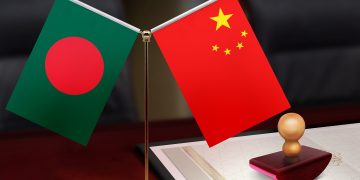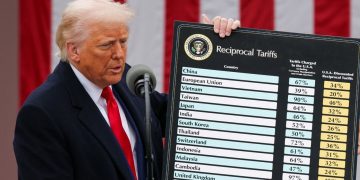Last month, on 22 January, three companies and US President Donald Trump announced a $500-billion project to build data centres and electricity plants and continue American dominance in artificial intelligence. Five days later, a Chinese AI chatbot named DeepSeek became the number one download on the applications stores. It has remained popular because it is excellent, as those who have used it know. DeepSeek’s success was unexpected because for several years now, US presidents have restricted China’s access to the most sophisticated computer chips. While the skills of the Chinese computer scientists were acknowledged, it was felt that denial of access to the best hardware would keep them trailing.
Someone likened the emergence of DeepSeek as artificial intelligence’s ‘Sputnik moment,’ a reference to the space race. To understand whether this is a similar contest, this time between America and China instead of America and the Soviets, let’s first take a look at the space race. Sputnik went into orbit in 1957, after a decade in which German scientists captured by Russians and Americans continued their work on rocket propulsion. The most important of these captured Germans was a man named Wehrner Von Braun, who came to the Americans. Despite this lead, the Soviets were able to go into orbit under the leadership of a talented designer named Sergei Korolev, whose essential design is still used by Russian rockets in 2025. After Sputnik began transmitting signals to earth round the clock, the Americans devoted an enormous amount of resources to try and catch up.
The Russians remained ahead for years however and put up the first animal in orbit (1957), first human in orbit (Yuri Gagarin in 1961), first probe to Mars (1962), first woman in space (1963), first space walk (1965), first soft landing on the moon (1966) and even sent animals to orbit the moon and return safely in 1966.
However, the Americans came back with the most spectacular achievement of them all and that was the human landing on the moon in 1969. The budget of NASA, the US space administration body, was at this time 4 per cent of the total federal government’s expenditure. After the Americans sent a few more crews to the moon, the public’s interest waned. NASA’s budget was cut and the enormous rocket developed by Von Braun, the Saturn V, was replaced by the space shuttle, which was less capable. The Soviets gave up on attempting to land on the moon after their own large rocket, the N1, failed and crashed a few times.
Read Also: A Sputnik Moment?
This was still a time before GPS and mobile phones and even television broadcasting was terrestrial. This meant that there were few people willing to invest in space and satellites and for decades this remained the case. So this then was the story of the space race. The artificial intelligence race has a few things that are difference. First, the primary drivers are not public interest, national pride or government spending. It is corporates who are pushing the advances here. The corporates competing against each other in the United States are the ones that have the most resource to do this: Google, Facebook, Elon Musk, Microsoft and Open AI. The goal is to achieve human level intelligence and then let that intelligence improve itself. The second step is thought to be achievable very rapidly once the first step, that of arriving at human level intelligence, is completed. This will give the company that gets there ahead of the others an enormous advantage. For this reason the spending on it will not be dependent on the things that ended the space race. The total spend on AI research is many times more than what was spent on NASA and the Soviet space programme combined.
The second difference is that there is a national security interest in this, because if China develops an AI that, like DeepSeek, is the first to get there, America will fear the loss of its global dominance. And for this reason the US, under whichever president, and of course China, will continue to push for further advances from their companies. Note that the European Union, while as economically powerful as the US and China, is not a serious competitor in this field. No other nation is, including Russia, which is a shadow of the technological giant it was 60 years ago. The race is between the US and its only peer competitor, China.
Unlike the space race, the race to develop superintelligence is not a side project. It touches the core interests of the companies and the countries in which the work is happening. All nations other than these two global rivals can only look on and hope that the outcome is in some way favourable to them or, to put it more accurately, is less unfavourable to them. In the last two centuries, the technological gap between nations had narrowed. The last time there was a significant gap, a major part of the world, including South Asia, North and South America, Australia and much of Africa, were colonised. Larger populations came into the control of smaller, more advanced ones. China suffered what it refers to as its century of humiliation, beginning in 1839 under the British. It is determined not to be forced into that position and has the capacity in 2025 to resist domination.
The AI race has one last difference over the space race. While both races were portrayed as being part of a larger rivalry between democracy and authoritarian systems, this current contest is also one between the West and the East. Democracies in developing nations like India might feel attracted to Trump’s United States, but they will note that this is also a contest between America and Asia.
By Aakar Patel







































